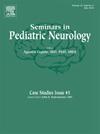小儿中枢神经系统肿瘤:概述和治疗范例
IF 2.1
4区 医学
Q2 CLINICAL NEUROLOGY
引用次数: 0
摘要
中枢神经系统(CNS)肿瘤是儿童中最常见的实体肿瘤,胶质瘤、髓母细胞瘤和室管膜瘤是最常见的诊断。最新的2021年世界卫生组织(WHO)中枢神经系统肿瘤分类(CNS5)将分子遗传学与传统组织病理学相结合,导致更准确的诊断和风险分层/预后,随后发展个性化治疗模式。小儿胶质瘤传统上分为低级别胶质瘤(pLGG)和高级胶质瘤(pHGG)。pLGG往往有很好的总生存率,然而,病程可能以多次复发为特征,导致显著的发病率。手术切除是标准的药物治疗(化疗或口服分子靶向治疗)保留在放射学/症状进展的情况下。尽管进行了强化的多模式治疗,但pHGG的总生存率较差。室管膜瘤发生于幕下和幕上脑以及脊柱,标准治疗包括最大安全切除和受病灶放射治疗,总治愈率为三分之二。髓母细胞瘤是发生在小脑的最常见的恶性胚胎性中枢神经系统肿瘤,具有生物学异质性。考虑到脑脊液播散的风险,髓母细胞瘤需要手术、颅脊髓放射以及多药化疗,这种方法在大多数非转移性疾病患者中是可以治愈的。在过去的几十年里,儿童神经肿瘤学领域取得了长足的进步,分子诊断的作用不断提高我们对儿童肿瘤生物学的理解,并提供了更多个性化的治疗范例。本文章由计算机程序翻译,如有差异,请以英文原文为准。
Pediatric CNS tumors: Overview and treatment paradigms
Central nervous system (CNS) tumors represent the most common solid tumors occurring in children, with gliomas, medulloblastomas and ependymomas being the most frequently diagnosed. The most recent 2021 World Health Organization (WHO) Classification of Tumors of the CNS (CNS5) has integrated molecular genetics with traditional histopathology leading to more accurate diagnosis and risk stratification/prognostication with subsequent development of personalized treatment paradigms. Pediatric gliomas are traditionally subdivided into low-grade (pLGG) or high-grade gliomas (pHGG). pLGG tend to have excellent overall survival, however, the disease course maybe characterized by multiple recurrences resulting in significant morbidity. Surgical resection is standard with medical therapy (chemotherapy or oral molecular targeted therapy) reserved in the event of radiographic/symptomatic progression. pHGG have poor overall survival despite intensive multimodality therapy. Ependymomas occur in the infratentorial and supratentorial brain as well as in the spine, with the standard treatment including maximal safe resection with involved field radiation therapy that is curative in two-thirds of patients overall. Medulloblastomas are the most common malignant embryonal CNS tumor arising in the cerebellum and are biologically heterogeneous. Given the risk of CSF dissemination, medulloblastomas require surgery, craniospinal radiation as well as multi agent chemotherapy, an approach that is curative in the majority of patients with non-metastatic disease. The field of pediatric neuro-oncology has made robust strides in the past few decades and the role of molecular diagnostics has continued to improve our understanding of pediatric tumor biology and offer more personalized treatment paradigms.
求助全文
通过发布文献求助,成功后即可免费获取论文全文。
去求助
来源期刊

Seminars in Pediatric Neurology
CLINICAL NEUROLOGY-PEDIATRICS
CiteScore
4.80
自引率
0.00%
发文量
38
审稿时长
84 days
期刊介绍:
Seminars in Pediatric Neurology is a topical journal that focuses on subjects of current importance in the field of pediatric neurology. The journal is devoted to making the status of such topics and the results of new investigations readily available to the practicing physician. Seminars in Pediatric Neurology is of special interest to pediatric neurologists, pediatric neuropathologists, behavioral pediatricians, and neurologists who treat all ages.
 求助内容:
求助内容: 应助结果提醒方式:
应助结果提醒方式:


